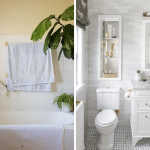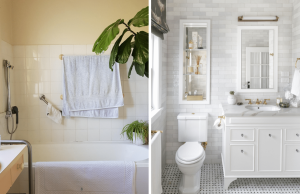
Many styles and purposes are possible for wall sconces. Safety lighting, highlighting architectural features and artwork, task lighting, and decorative purposes are all possible use for wall lighting. Artwork and architectural details may be brought out with well-placed wall lighting.
There’s no need for me to have wall sconces.
For many, the thought of a “wall light” immediately conjures up a picture of an ornamental sconce that, apart from providing some ambience, does not provide much in the way of actual illumination. Wall sconces may be used for many purposes, from reading to illuminating work areas to increasing safety in a room. Wall lights aren’t only for decoration; this is an apparent but vital purpose. Properly layered lighting, which includes wall lights, enhances the aesthetic value and practicality of design schemes as a whole. There is a wide selection of aesthetic choices available for wall sconces.
Where on the walls should I put lamps?
LED wall sconces and outdoor wall lanterns are two examples of this kind of flexible illumination. Using wall lights as opposed to overhead lighting creates a more ambient effect and may minimise glare, while wall-mounted fixtures give supplemental illumination, working in combination with ceiling lights. When it comes to the multi-layered lighting seen in toilets, vanity lights play a crucial role: Light lights mounted on the walls on each side of a mirror may be used to cancel out harsh overhead light and provide an equal wash of illumination over the face. Choosing the cool wall lights is essential.
A wall-mounted swing arm light may be a nice upgrade over a regular desk lamp in a workspace or hobby room. With this illumination, you can put horizontal surfaces to greater use. Wall-mounted spots are useful for drawing attention to niches, sculptures, and other architectural details like ornamental pieces, while picture lights are best for showcasing artwork. On the porch and along the outside walls of a structure, exterior wall lights are often placed for security reasons; however, many designs also contain decorative components for added aesthetic value.
Link A wall-mounted task light is commonplace in workplaces.
Adding wall lights is a good idea everywhere, but especially in rooms where the ceiling light and floor/table lamps will do most of the work in terms of illumination. Wall lights provide ambience and illuminate gloomy corners when the sun goes down. If you want to give the impression that light is flooding in through large windows, wall sconces may be placed on each side of the window. In addition, if you need to make your way around the room in the dark, think about mounting a wall light in a strategic location, such as next to a doorway. When each light in a room has its own switch, you have more command over the overall lighting design. You can control the mood of a room by installing dimmer switches on the lights, and they work particularly well with wall sconces.
Can you tell me how many lights would be ideal for my wall?
If you want to get the most out of your wall lights, it’s important to put them in the right places. A good rule of thumb is to hang them at around eye level, which is somewhere between 5.5 and 6 feet, however this may vary depending on the ceiling height and the size of the fixture. Remember that the exposed light bulb in a wall sconce should never be in your line of sight, so keep that in mind when deciding how high to mount the fixture








